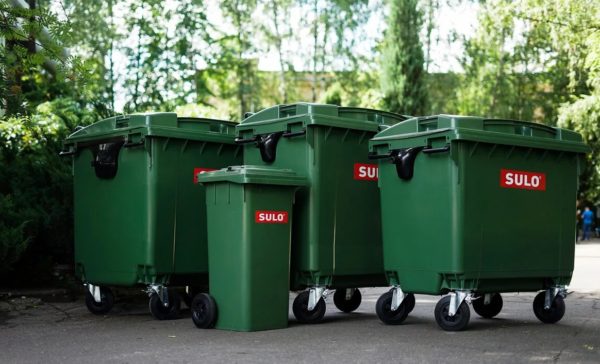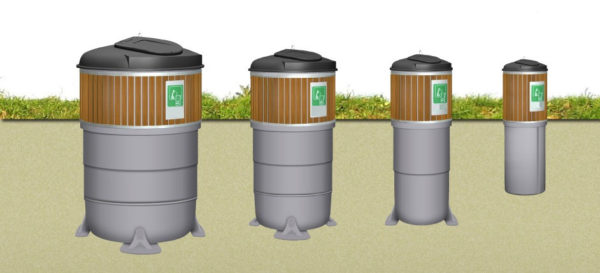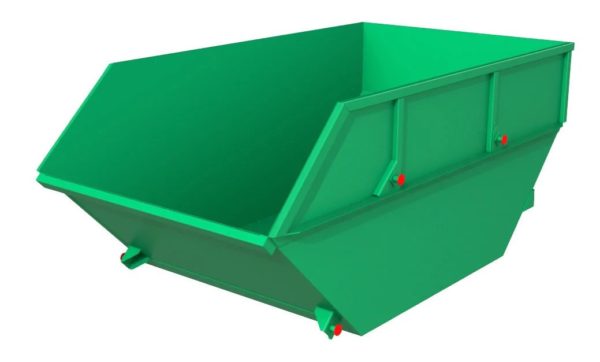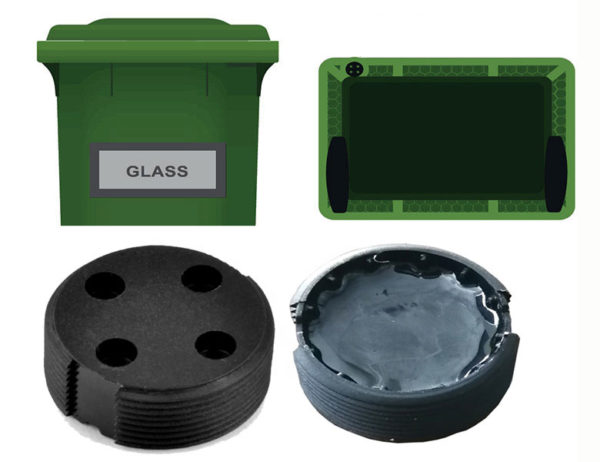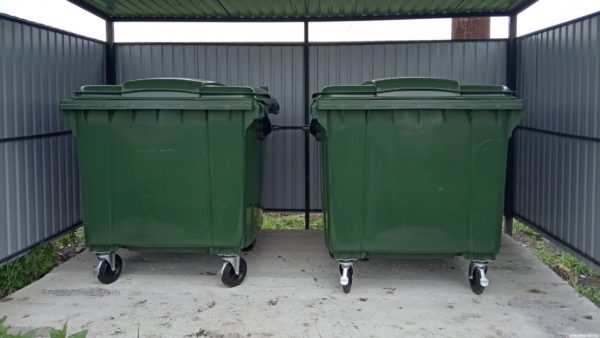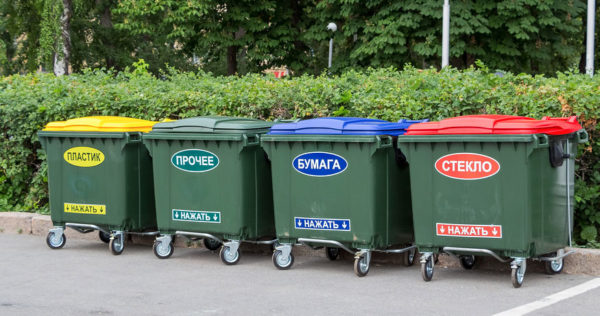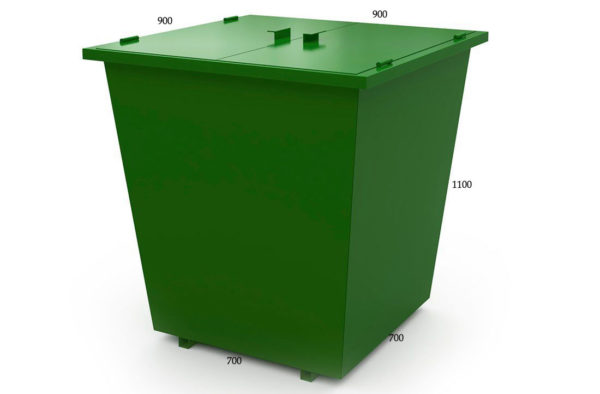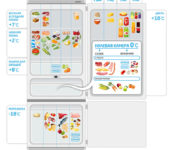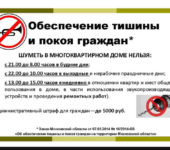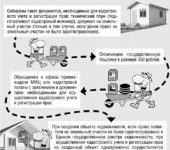Types of waste containers, their size and volume
On the territory of the Russian Federation, garbage containers differing in size and volume are used to collect solid municipal waste. In addition, they differ in configuration, color and material of manufacture. There are tanks with accessories for easy transportation. Each type of garbage container is used in accordance with the norms controlled by the SES.
The content of the article
What are containers
By design, the container is a container of a certain capacity, where solid household waste is deposited for temporary storage. They prevent the scattering of waste over the territory, spreading it by the wind. The spread of unpleasant odors through the air is reduced. The container restricts access to solid waste for animals and partially for birds, insects, which are carriers of infection. A special SES service controls the storage process.
MSW and MSW containers
What is the difference between them. The fact is that until 2014, the garbage to be disposed of was called solid household waste (MSW). According to the new rules of the legislation of the Russian Federation, a new designation was introduced - MSW. The abbreviation stands for solid municipal waste.
The law finally came into force in 2019. Now, in all official documents, household waste is designated MSW. Changing an abbreviation means nothing for ordinary citizens. Household waste is still classified as solid municipal waste, which is divided into two types:
- biological;
- non-biological.
The changes only affected recycling companies. In their documentation, they are required to use the new designation, as well as display the abbreviation in utility bills.
Bunkers for MSW remained the same as for MSW. Requirements and standards have been preserved. The changes affected only the abbreviation.
Types of containers
The Russian government has launched reforms that envisage separate collection of MSW. The range of containers produced has expanded significantly. Conventionally, all waste bins are divided into two types according to the type of installation:
- Above-ground tanks are considered mobile. Small containers are carried by hand, rolled on wheels, if such are provided by the design. A distinctive feature is the small area of the waste container, which takes about 1 m2 places. Bulky heavy stationary waste bins. Utilities emptied them using special vehicles.
- Buried type waste bins are immersed inside the mine. Only the MSW receiver protrudes to the surface of the earth. Install containers in crowded places. They prevent the spread of unpleasant odors and look aesthetically pleasing. Garbage is pressed under its own weight, which allows it to be removed less often than from above-ground tanks.
Above-ground types of garbage containers differ in design. They are:
- standard in the form of a container without a lid, wheels, handles;
- with handles for transportation (usually small tanks);
- with a cover that prevents the spread of unpleasant odors, wetting of waste during rain, restricts the access of animals and birds;
- with wheels that provide ease of movement of the container across the territory;
- combined models - with wheels and a cover.
Tanks with an increased volume of the garbage bin, as well as a modified design, are called storage bins. They are taller than conventional bins, but have one low side. The storage bin for solid waste is intended for manual filling with bulky waste.
To comply with the law on the separate collection of MSW, manufacturers produce two types of containers:
- Garbage collectors for a two-line method of collecting MSW are considered the most common. They are installed near residential buildings. By the color of the tank, people determine what kind of waste they are intended for: gray - for organic matter, blue - for dry rubbish (glass, plastic, paper and other types). In the manufacture, metal with a thickness of 1.5-2 mm with a galvanized, enameled coating or HDPE plastic (low-pressure polyethylene), resistant to temperatures from –80 to + 110 ° C.
According to SNiP norms, organic waste containers are necessarily equipped with a lid. The presence of wheels does not fall under the technical requirements, but is in demand due to the convenience of moving the tanks. Modern front bins are equipped with a smart RFID tracker. The tag contains information about the container: location, service organization, unloading time. The tracker allows GPS monitoring.There is no difference between plastic and steel tanks. They are all compliant with the Waste Container Act. Service organizations themselves are guided when purchasing a model, taking into account the needs and conditions of the budget. The capacity of small euro bins is from 120 to 360 liters, and the volume of a standard waste container is from 770 to 1100 liters.
- Garbage bins for the separate method of collecting MSW allow separate storage of food and non-food waste. The first ones are made of solid walls, and the second ones are equipped with a lattice on one or several sides. It allows a person to visually see where to throw what kind of garbage. Glass, plastic, metal, paper are separately thrown into containers for a separate collection method.
The tanks are similarly made of metal or plastic. According to the SanPiN standards, up to 5 tanks for a separate method of collecting solid waste and 1 container for organic matter are installed on one site.
The color scheme is designed for separate collection of solid waste. On the territory of the Russian Federation, there are two schemes.
According to European standards, the color of the tank indicates what type of waste it is intended for:
- green - all types of glass;
- blue - paper products;
- Orange - all types of plastics;
- grey - organic;
- yellow - scrap metal;
- red - electronic products.
The second scheme is simplified and is most often used in the regions of the Russian Federation. Gray boxes are used for organic matter, and orange or blue for non-food waste.
In small settlements, there are waste bins and containers according to GOST 12917-70, that is, of the old model, rusty or painted with red-brown soil, sometimes with green enamel. People often dump waste all together, organic and inorganic, which violates the requirement of the established norms.
Requirements for containers
According to the technical requirements, the manufacturer uses the working drawing of the waste container when manufacturing it. Its violation is unacceptable. From a large list of requirements, it is worth considering the main points:
- the tanks must correspond to the climatic version UHL1 according to GOST 15150-69, have a reinforced upper edge and walls for safe unloading by a loader;
- according to the requirements for containers, solid waste must be watertight for the entire height of tanks for organic matter and for 1/3 of the height for containers for non-food waste;
- damage to the walls is unacceptable, the presence of diagonal distortions greater than 8 mm.
The painting of the container must comply with GOST standards, if there is a lid, then a gap between the body of 4 mm is allowed in the closed state.
Dimensions and volume of containers
Since 01.01.1986 GOST 12917-70 has been canceled and now OST 22-1643-85 is in force, according to which the standard waste bins are now being produced.But here are the technical characteristics of GOST 12917-70:
- the size of the upper part is 900x900 mm;
- bottom size - 700x700 mm;
- total height of the waste container - 1100 mm;
- production material - steel 2 mm thick in accordance with GOST 19904-90.
The characteristics are inherent in an open garbage container, the volume in cubes of which is 0.75 cubic meters.
Trash cans differing in volume on the street are of the following types:
- Portable containers for the private sector are compact. The volume varies from 60 to 300 liters.
- Euro containers are found in large cities. They are distinguished by their presentable appearance. On average, the volume of a waste container for solid waste is 1.1-1.3 m3.
- Bells are in demand when assembled separately. The capacity varies from 2.5 to 5 m3.
- The boats are installed near multi-storey buildings. The dimensions of such a waste container are 8 m3 are presented in the figure. The volume of MSW containers sometimes reaches 15 m33.
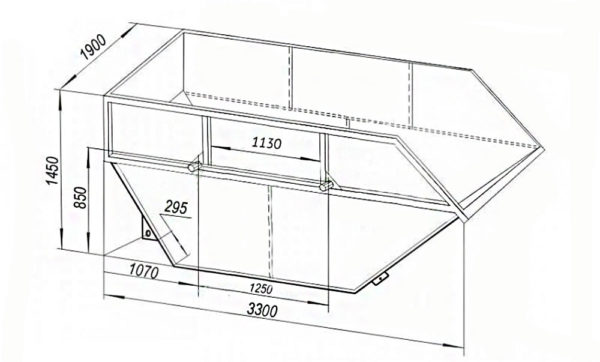
- Even larger dimensions at the garbage bin for a rope or hook grip. The volume of containers varies from 20 to 40 m3, and put it on construction sites under bulky waste.
The sizes of garbage cans, which are selected depending on their purpose and the type of MSW. The most common dimensions: metal models - 1270x850x1170 mm, plastic - 530x530x560 mm.
It is important to note that the size of waste containers may vary from manufacturer to manufacturer. Sometimes they deviate from the standards, adjusting the dimensions of the container for a convenient way of transporting the tank, the approximate amount of MSW, the required space.

